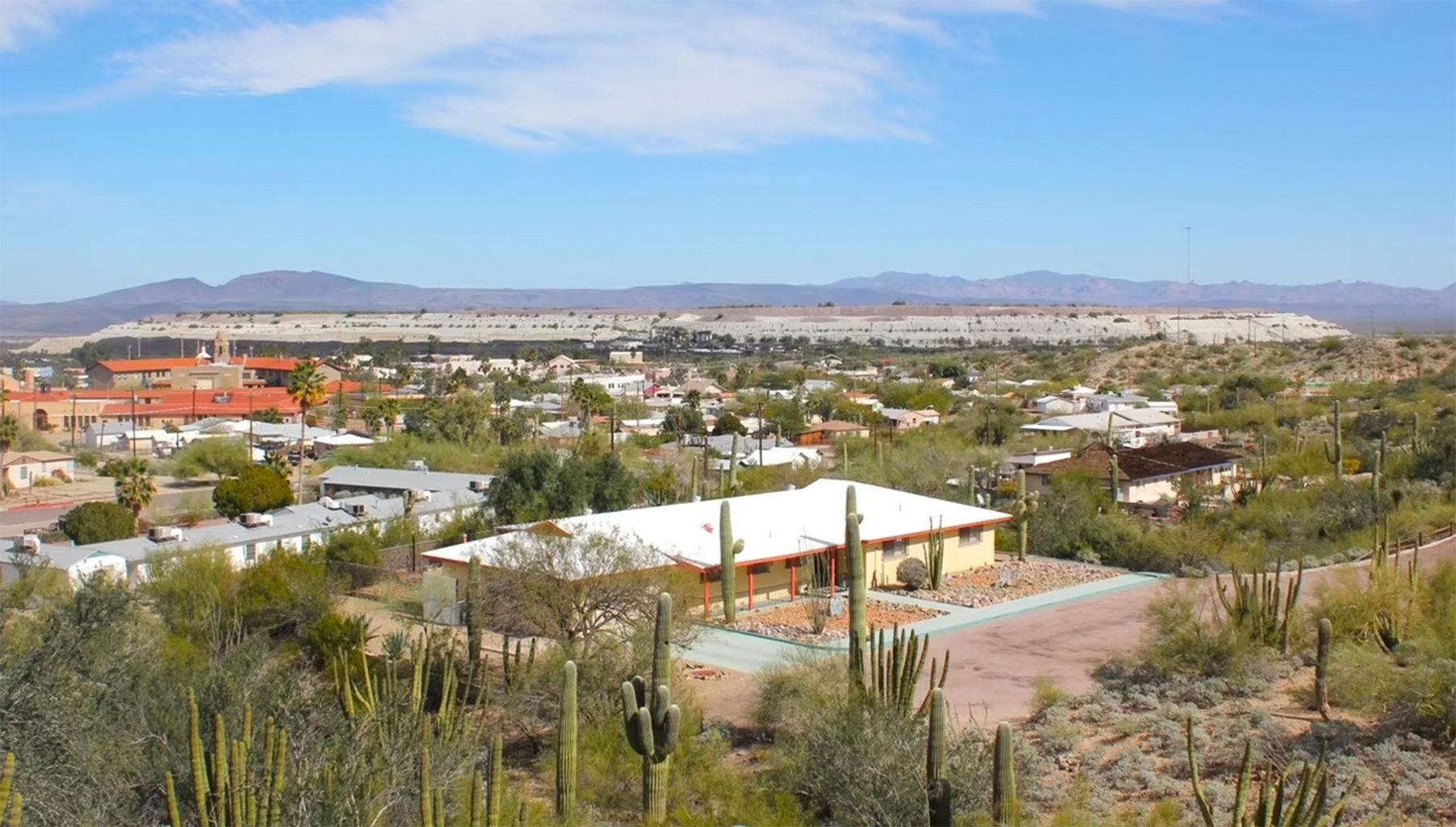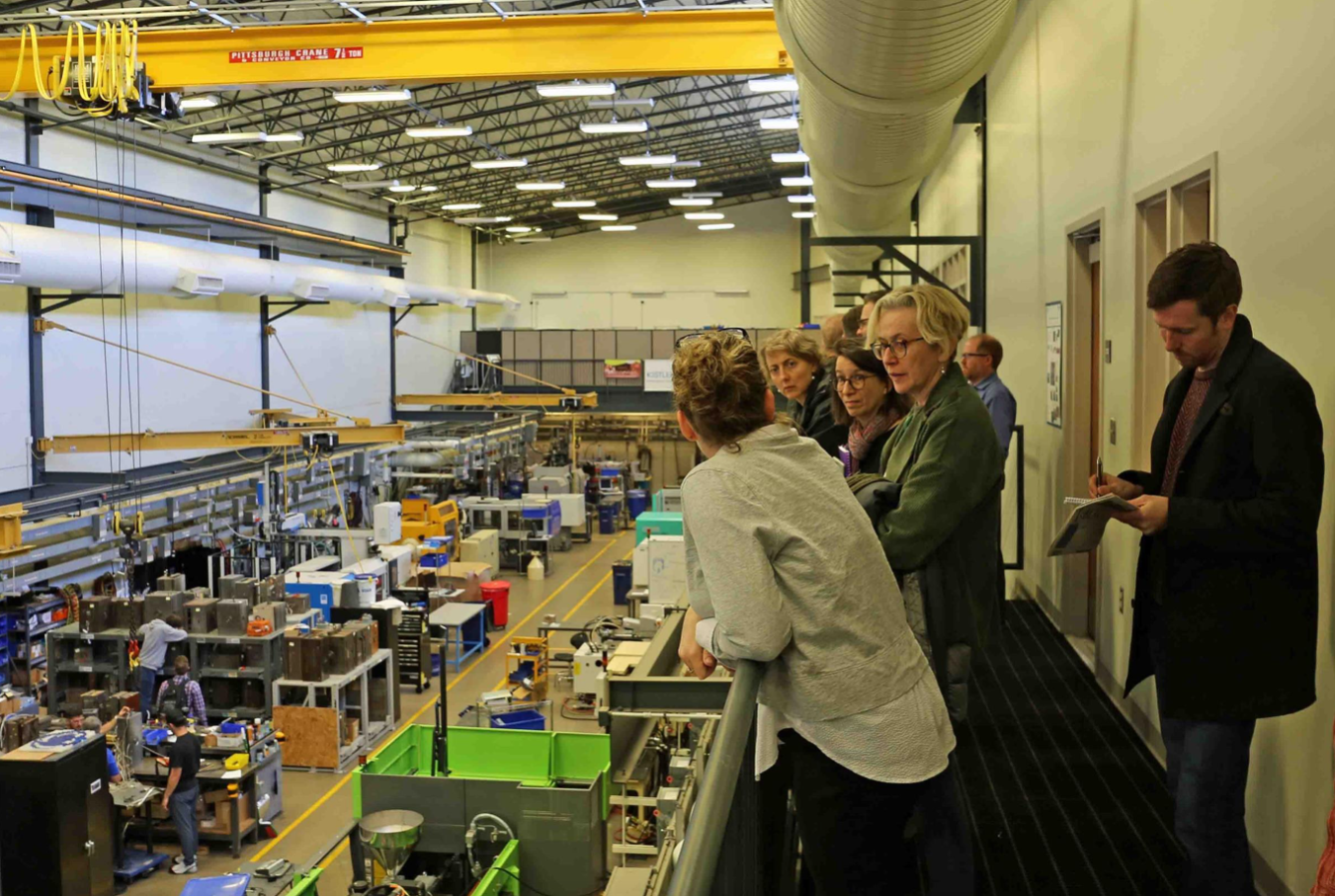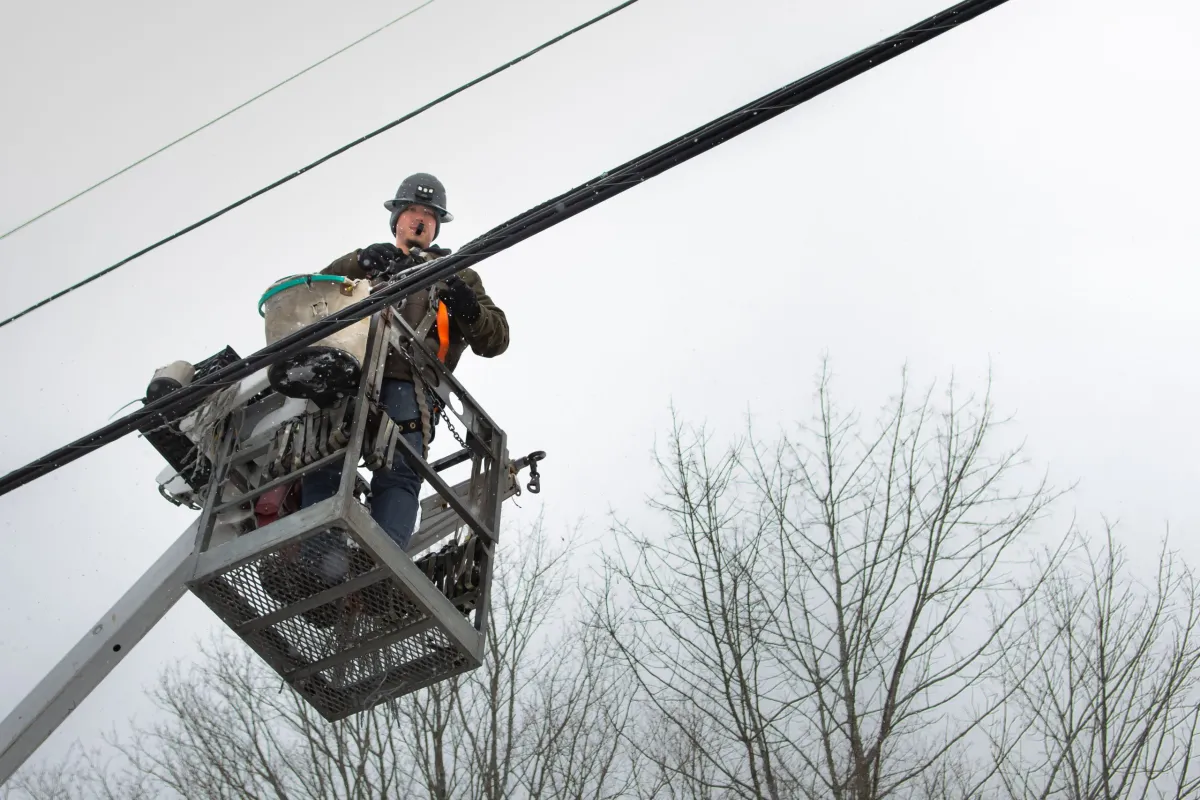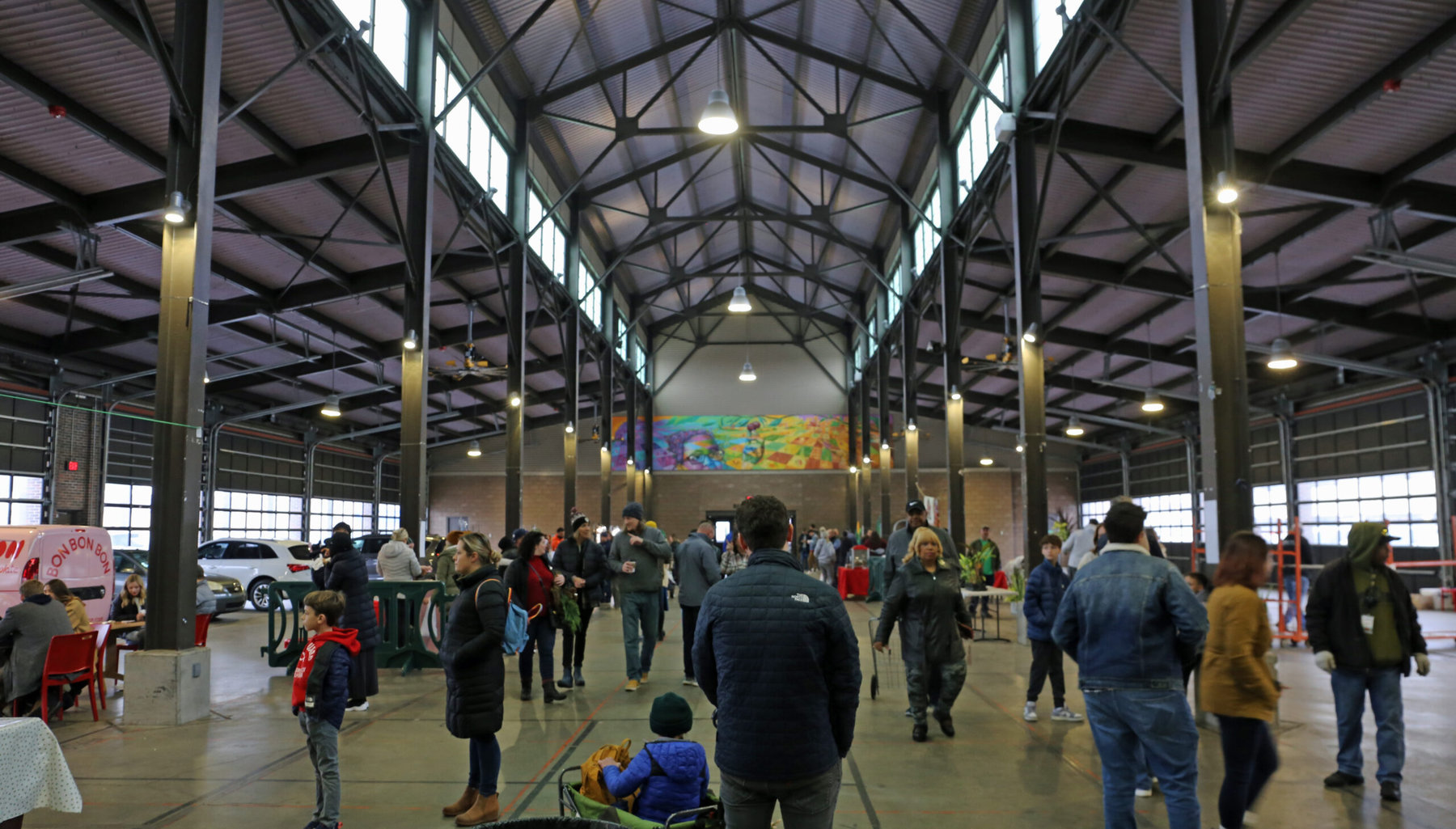It’s time for next stop on the western swing of our American Futures journeys. This brings us to Ajo, a tiny, struggling, but hopeful town in far southwestern Arizona.
Through our travels we’ve been looking for communities that have suffered some kind of reverse—economic, environmental, cultural, or otherwise—and have found a way to respond. This first post will describe the nature of Ajo’s challenge, which was as dramatic as they come.
Thirty years ago, the mine closed suddenly, putting nearly everyone in town out of work. It’s a classic boom-and-bust story, familiar from company towns and mining areas around the world. What’s unusual in Ajo’s case is the path toward survival and renaissance that groups of local citizens are undertaking. That’s the story we’ll explore in our next series of posts, starting with this one that lays out the severity of Ajo’s challenge. Now, let’s set up the story:




